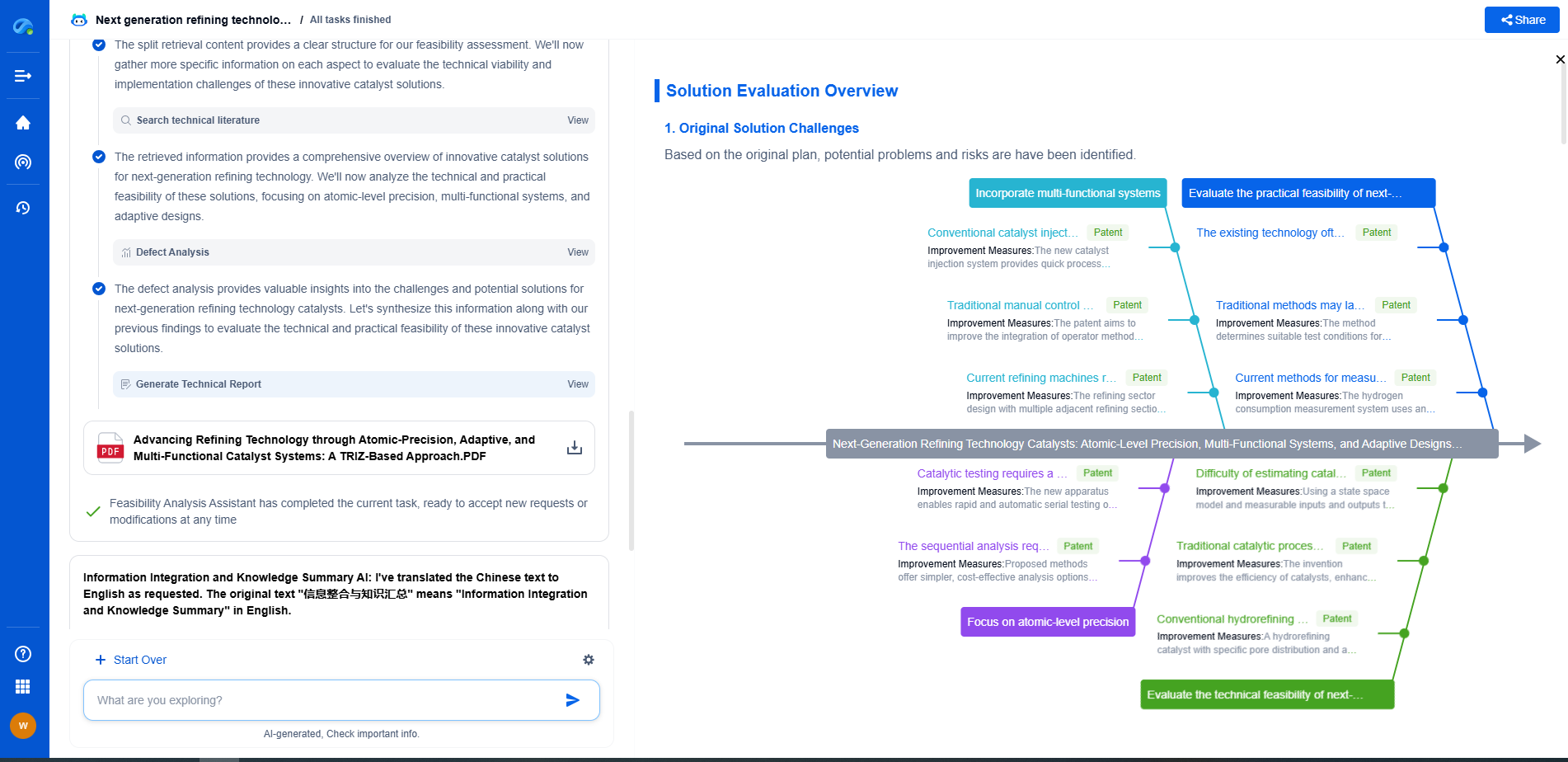Analog vs Digital Beamforming: Which One Is Used in 5G mmWave?
JUL 7, 2025 |
In the realm of 5G technology, particularly when it comes to mmWave (millimeter-wave) frequencies, beamforming plays a crucial role. Beamforming is a technique that focuses a wireless signal towards a specific receiving device, rather than having the signal spread out in all directions from a broadcast antenna. This focused approach significantly enhances signal strength and quality, making it a cornerstone in the deployment of 5G networks. However, not all beamforming solutions are created equal. In the world of 5G mmWave, two primary types of beamforming technologies are in use: analog and digital beamforming. Each has its own set of advantages, trade-offs, and specific use cases.
Analog Beamforming: Simplicity and Cost-Effectiveness
Analog beamforming is perhaps the more straightforward of the two techniques. It involves the use of phase shifters to adjust the phase of the signal that each antenna element transmits. By altering these phases, it is possible to steer the beam in the desired direction. This method has been widely adopted in earlier wireless technologies due to its relatively low complexity and cost-effectiveness.
One of the main benefits of analog beamforming in the context of 5G mmWave is its simplicity. It requires fewer hardware components, which translates into reduced costs and power consumption. This makes it an attractive option for network operators looking to deploy 5G infrastructure without significant financial outlay.
However, analog beamforming also comes with its limitations. It typically supports only one beam per antenna array at a time, which can be a constraint in dynamic and densely populated environments. Moreover, the precision with which the beam can be steered is often limited, potentially impacting performance in scenarios that demand high accuracy and adaptability.
Digital Beamforming: Flexibility and Precision
On the other side of the spectrum lies digital beamforming, a more advanced technique that offers greater flexibility and precision. Unlike analog beamforming, digital solutions utilize digital signal processing (DSP) to manipulate the signals at each antenna element. This allows for the creation of multiple beams simultaneously from a single antenna array, enabling networks to efficiently manage multiple users and devices.
The precision and adaptability of digital beamforming make it well-suited for the high-frequency, high-capacity demands of 5G mmWave networks. It provides superior performance in terms of beam steering accuracy and the ability to handle interference from other signals. Moreover, digital beamforming can adaptively adjust to changes in the environment or user demand in real-time, offering enhanced reliability and user experience.
Despite these advantages, digital beamforming tends to be more complex and costly. The need for advanced digital processing capabilities and more sophisticated hardware can drive up both the initial deployment costs and ongoing operational expenses. This can be a significant consideration for network operators evaluating the financial implications of their technology choices.
Which One is Used in 5G mmWave?
In practice, the choice between analog and digital beamforming in 5G mmWave deployments is not an either-or proposition. Many network operators opt for a hybrid approach, combining the strengths of both techniques to deliver optimal performance and cost efficiency. Hybrid beamforming leverages the simplicity and cost benefits of analog beamforming while integrating digital processing capabilities to boost flexibility and precision.
This approach allows operators to tailor their networks to specific needs and constraints, achieving a balance between performance, cost, and complexity. For instance, in urban environments with high user density and significant interference challenges, digital beamforming's precision and adaptability are invaluable. Conversely, in less demanding scenarios, analog beamforming may suffice, providing a more economical solution.
Ultimately, the decision hinges on a variety of factors, including the specific use case, environmental conditions, budget constraints, and technological goals. As 5G mmWave technology continues to evolve, the flexibility to adapt and optimize beamforming strategies will be key to unlocking the full potential of this next-generation wireless network.
Conclusion
The advent of 5G mmWave technology has revolutionized the way we think about wireless communication, and beamforming stands at the heart of this transformation. With its ability to focus signals and enhance performance, beamforming is critical to meeting the high-speed, high-capacity demands of modern networks. Whether through analog, digital, or hybrid approaches, the strategic implementation of beamforming technologies will be essential to the success of 5G deployments worldwide. As networks continue to expand and evolve, understanding and leveraging the nuances of these technologies will be paramount in delivering the connectivity of the future.
Empower Your Wireless Innovation with Patsnap Eureka
From 5G NR slicing to AI-driven RRM, today’s wireless communication networks are defined by unprecedented complexity and innovation velocity. Whether you’re optimizing handover reliability in ultra-dense networks, exploring mmWave propagation challenges, or analyzing patents for O-RAN interfaces, speed and precision in your R&D and IP workflows are more critical than ever.
Patsnap Eureka, our intelligent AI assistant built for R&D professionals in high-tech sectors, empowers you with real-time expert-level analysis, technology roadmap exploration, and strategic mapping of core patents—all within a seamless, user-friendly interface.
Whether you work in network architecture, protocol design, antenna systems, or spectrum engineering, Patsnap Eureka brings you the intelligence to make faster decisions, uncover novel ideas, and protect what’s next.
🚀 Try Patsnap Eureka today and see how it accelerates wireless communication R&D—one intelligent insight at a time.
- R&D
- Intellectual Property
- Life Sciences
- Materials
- Tech Scout
- Unparalleled Data Quality
- Higher Quality Content
- 60% Fewer Hallucinations
Browse by: Latest US Patents, China's latest patents, Technical Efficacy Thesaurus, Application Domain, Technology Topic, Popular Technical Reports.
© 2025 PatSnap. All rights reserved.Legal|Privacy policy|Modern Slavery Act Transparency Statement|Sitemap|About US| Contact US: help@patsnap.com

